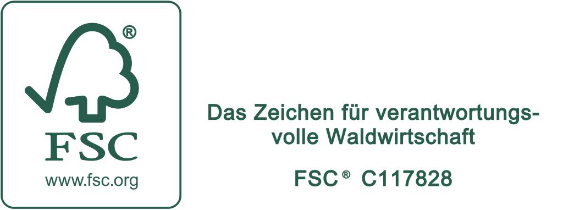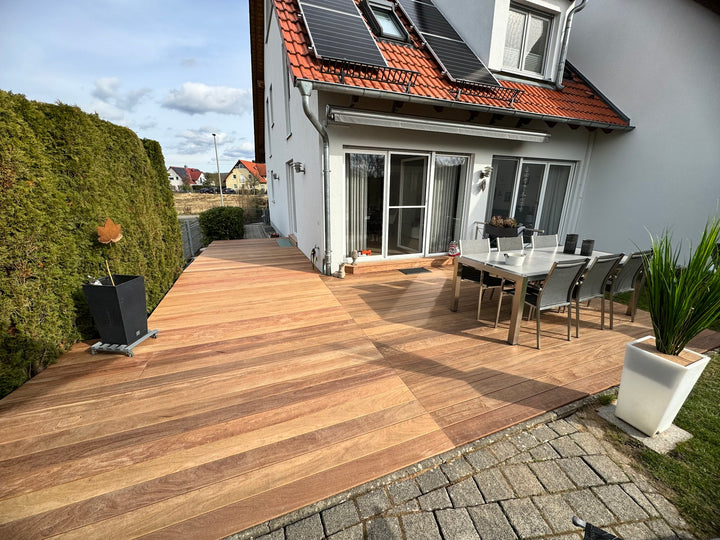The Garapa wood species provides a high-quality, heavy and light wood with a high level of natural durability and mechanical strength, which is ideal for decking. This wood species is characterized by its honey-yellow color, which turns brownish after installation.
The natural area of origin is tropical South America, southern Brazil, northern Argentina and Paraguay.
The durability according to DIN-EN 350-2 corresponds to class 3, so that there is only a restriction for use in direct contact with the ground. Garapa can be used long-term without special protective measures.
Garapa has a density of 790kg to 1,010kg per cubic metre of wood at a wood moisture content of 12% to 15%, which means that an average standard plank with a cross-section of 25x145mm has an average weight of approx. 3.3kg per linear metre.
The Brinell hardness is given as 30 to 79 N/mm 2 and is therefore significantly higher than that of the domestic white oak, for example.
The term KD describes the drying method used to dry the wood from its fresh state to 16-18%. In this case, it is a technical drying process in a drying chamber under controlled conditions. (AD corresponds to air drying).
swelling and shrinking
Garapa has a medium swelling and shrinking behavior and the speed at which moisture is absorbed and released is low. The dimensional changes caused by swelling and shrinking must be taken into account when laying as a terrace board. A gap of at least 4 mm must be maintained when laying (with a wood moisture content of 16-18%).
workability
Carbide-tipped tools are required to work the wood. Garapa is generally easy to work with, but the twisted grain can affect the quality of the cut surface (rough surface) and the silica deposits (SiO 2 ) lead to increased effort and greater wear/blunting of tools.
The wood must always be pre-drilled for the fastenings to prevent the fastening screws from being unscrewed and also to avoid possible cracks in the wood.
Iron-tannin reaction / ingredients
Contact with ferrous metals must be avoided as this will cause grey-blue discolouration due to the tannin-containing ingredients. The use of A4 stainless steel is strongly recommended (fasteners, railings). Water-soluble ingredients can lead to contamination, so surface water should be drained away using suitable measures.
But other sources of contamination (e.g. metalwork) must also be avoided, as even small particles can lead to an iron-tannin reaction.
Our expert advice is there for you – by phone or live chat directly on our website:
📞 +49 9543 448 - 0
💬 Live chat: Simply click on the chat icon in the bottom right corner






















